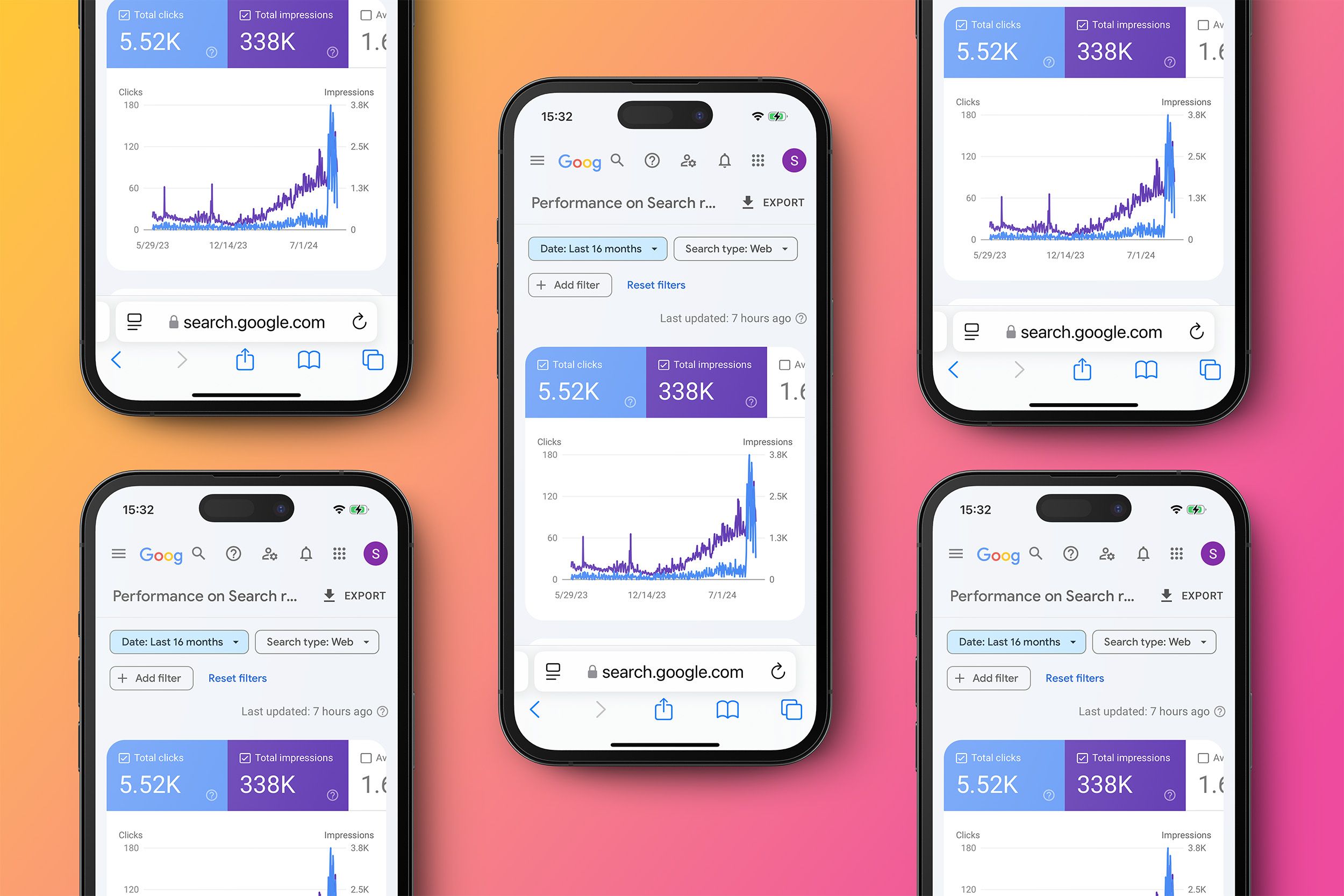In the world of digital marketing, Google Search Console (GSC) is one of the most powerful and free tools to optimise your website’s SEO. GSC provides invaluable data on your website’s performance, allowing you to understand how Google views your site, troubleshoot issues, and enhance your search rankings. This guide will break down the key features of GSC and explain how to leverage them for SEO success.
What is Google Search Console?
Google Search Console is a free tool provided by Google that allows website owners to monitor their website’s search presence and performance. It offers insights into how well your site is indexed, alerts you to potential issues, and offers tools to improve your site’s visibility in search results.
Whether you’re an SEO professional or a business owner, GSC can help you track traffic from organic search, spot indexing issues, and optimise for better search rankings.

Key Features of Google Search Console
1. Performance Report
One of the primary features is the Performance Report, which shows crucial metrics like clicks, impressions, average CTR (click-through rate), and average position for your website. This report helps you understand which queries drive traffic to your site, which pages are performing well, and where there’s room for improvement.
- Clicks: The number of times users clicked on your site in the search results.
- Impressions: How often your site appeared in search results.
- CTR: The percentage of impressions that resulted in clicks.
- Average Position: Where your site ranks on average for a given search query.
Tip: Focus on pages and queries with high impressions but low CTR to identify where you can improve meta titles and descriptions.
2. Index Coverage Report
The Index Coverage Report shows the status of your site’s pages in Google’s index. It flags issues that prevent your pages from being indexed, such as 404 errors or server errors.
- Errors: Pages that cannot be indexed.
- Valid with warnings: Pages that are indexed but with issues.
- Valid: Pages successfully indexed.
- Excluded: Pages not indexed, often by design (e.g., blocked by robots.txt).
Fixing any errors or warnings in this section can lead to better crawlability and ranking potential.
3. URL Inspection Tool
With the URL Inspection Tool, you can check how Google views a specific URL on your site. It shows whether the URL is indexed, if there are any errors, and how the page is rendered. You can also request a page to be re-indexed if you’ve recently made changes.
Tip: Use this tool after updating content or fixing issues to ensure that Google re-crawls the page promptly.
4. Mobile Usability Report
As more traffic moves to mobile, Google has prioritised mobile-first indexing. The Mobile Usability Report flags issues affecting your site’s mobile performance. Common problems include clickable elements too close together or content that doesn’t fit the screen properly.
Optimising for mobile isn’t optional anymore, as poor mobile usability directly affects rankings.
5. Sitemaps
Submitting a sitemap via GSC helps Google find and index your site’s content more effectively. A sitemap is a file that lists all the URLs on your site, helping search engines crawl the content better.
Once uploaded, GSC tracks how many of your sitemap’s pages are indexed and highlights any issues.
How to Use Google Search Console for SEO Improvements
Identify High-Opportunity Keywords
By reviewing the Performance Report, you can identify keywords for which you’re ranking in positions 10-20. These are perfect targets for optimisation since you’re already close to page one. Consider refreshing content, building internal links, or acquiring backlinks to boost these pages.
Optimise for Mobile
Mobile usability is now a crucial factor in search rankings. Use the Mobile Usability Report to ensure your site offers a seamless experience for mobile users. Resolve any issues flagged to avoid penalties and improve user engagement.
Fix Indexing Issues
The Index Coverage Report is your go-to for ensuring Google can crawl and index your site efficiently. Regularly checking for errors and submitting updated sitemaps is key to keeping your site’s health in top shape.
Monitor Backlinks
Google Search Console’s Links section shows the external sites linking to yours. High-quality backlinks from reputable sites improve your authority in Google’s eyes. Ensure that these links are relevant, and aim to acquire more from authoritative sources.
Use URL Parameters
For eCommerce or complex sites, GSC allows you to control how Google handles URL parameters like tracking codes. Mismanagement of these can lead to duplicate content issues, so this feature is essential to ensure clean indexing.
Benefits of Using Google Search Console Regularly
- Improved Rankings: With actionable insights from GSC, you can resolve issues, optimise content, and improve your position on search engines.
- Better Mobile Performance: Ensuring your site is mobile-friendly boosts your search visibility on mobile devices.
- Enhanced Crawl Efficiency: Fixing indexing and sitemap errors helps Google crawl and index your site more efficiently.
- Data-Driven Decisions: The performance data empowers you to make informed choices regarding keyword targeting, content creation, and site structure.
Final Thoughts
Mastering Google Search Console is crucial for staying competitive in the digital landscape. It allows you to gain deep insights into your site’s performance, identify opportunities for growth, and fix issues that may be holding you back. Regular use of GSC not only helps you maintain a healthy site but also enhances your SEO efforts, driving organic traffic and increasing visibility.
Ready to optimise your website’s performance? Contact Datum today to explore how we can help you leverage Google Search Console and elevate your SEO strategy.